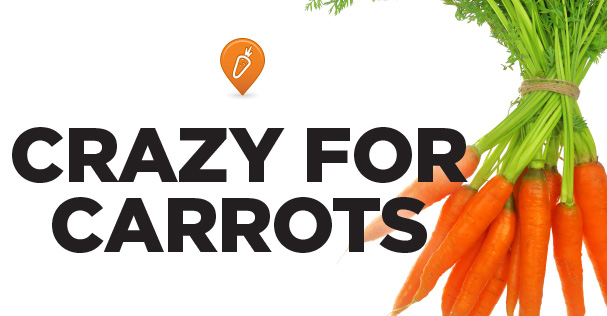By Lori Zanteson, Environmental Nutrition
Carrots were first cultivated about 1,100 years ago in the Afghanistan region, but seeds from its predecessor, the wild carrot, have been found in Europe dating back 5,000 years, when they were not grown as a vegetable, but as a medicinal herb and aphrodisiac by ancient Greeks and Romans. The first domesticated carrots were purple, yellow, red and white – but not orange. Over time, they have been domesticated from a tough and bitter root to the familiar crisp and sweet garden vegetable we adore today.
One of the most popular root vegetables in this country, carrots (Daucus carota sativus) are related to other pantry staples – parsley, celery, parsnips and dill. Carrots are best known for their abundant source of the pro-vitamin A (which can be converted to active vitamin A) and antioxidant beta-carotene (named for carrots). But carrots also offer additional vitamins and nutrients with health-promoting benefits. A one-cup serving of chopped carrots provides off-the-chart levels of vitamin A – over 400 times the DV (Daily Value, based on 2,000 calories per day) – for vision health, 14 percent DV of dietary fiber, and 21 percent DV of bone-protecting vitamin K.
Carrots’ striking orange hue is courtesy of beta-carotene, which also provides protection against cardiovascular disease (CVD.) In a 10-year study of the effect of fruits and vegetables on CVD, published in 2011 in the British Journal of Nutrition, carrots were the most prominent member of the dark yellow/orange food category. Participants who ate at least 25 grams (about one-quarter cup) per day of carrots had a significantly lower risk of CVD than those who didn’t eat carrots. Eating carrots also may help protect against some cancers. A study in the February 12, 2014 issue of European Journal of Nutrition found that carrot consumption significantly decreased risk of prostate cancer.
Fortunately, carrots are available all year long. The freshest carrots will have vibrant color – orange, red, yellow, even white – and will be firm and crisp. If the greens are attached, be sure they’re fresh and brightly hued, but remove them right away and refrigerate separately (tops are edible, too, however.) Enjoy raw carrots grated or sliced into most any dish, from salads and stir-fries to stews and baked goods. They are also divine roasted with olive oil and sea salt or cooked and pureed as a sweet soup – hot or cold!









